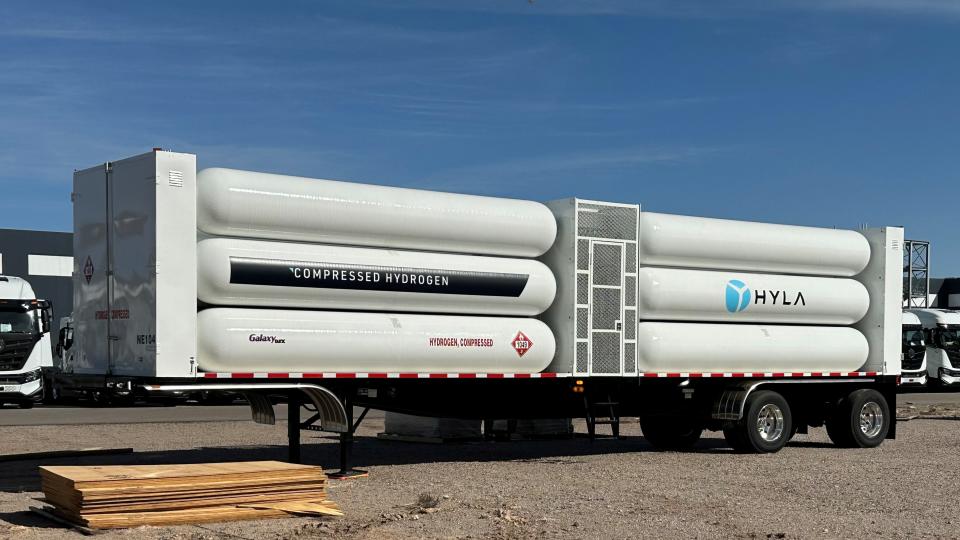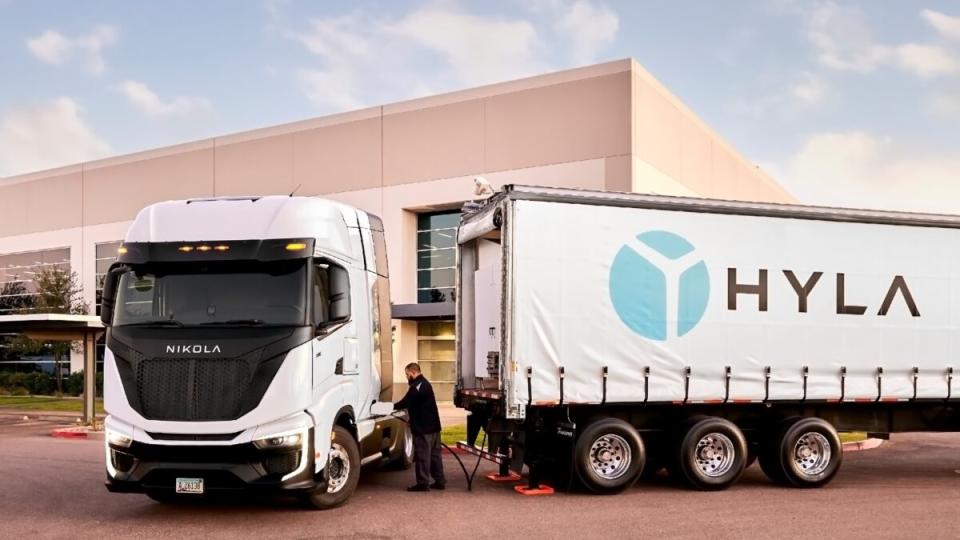Is Nikola counting too much on California for salvation?
Nikola Corp.’s (NKLA) ability to escape near-death experiences is being tested by its shouldering the $61.8 million cost of repairing its fire-prone battery electric trucks. But California’s generous incentives for electric trucks may be a path to survival as the startup’s latest peril plays out.
“California is a state on the cutting edge of technology and has big tailwinds for the transition to zero-emissions trucking with both carrots and sticks from government incentives and regulations,” Nikola CEO Steve Girsky told analysts on the company’s third-quarter earnings call Thursday.
The question facing Nikola: Are the carrots sufficient to generate enough revenue to keep the company afloat?
A 30,000-unit market for replacements
Southern California makes sense because drayage trucks working in the state’s ports must certify as emitting no tailpipe emissions beginning in January. Battery-electric trucks fit that use-case best, since the typical port-to-Inland Empire round trip is around 200 miles.
“While the pivot to the California market appears promising at first, I am skeptical if this market is big enough to support Nikola’s overhead,” Seeking Alpha investor site commentator Noah Cox wrote on Friday. “Nikola confronts significant structural hurdles in its journey to be recognized as a viable electric vehicle/hydrogen fuel cell truck manufacturer.”

The total addressable drayage truck market for zero-emission replacements in California is about 30,000 trucks. It’s universally understood that battery-electric vehicles (BEVs) will dominate the transition required by 2035.
“We believe there will be a large appetite for our trucks in the California market beginning in 2024 when the advanced Clean Fleets rule goes into effect,” Girsky said.
Time works against Nikola in its financial predicament. Class 8 BEV sales are slow. Nikola, Volvo Truck and Daimler Truck North America safety recalls hinder adoption.
HVIP’s millions tilt toward small fleets in 2025
The California Hybrid and Zero Emission Bus and Truck Voucher Program (HVIP) set aside hundreds of millions for dealers to apply to fleet purchases and leases for emission-free vehicles. In the case of a Class 8 hydrogen truck, it could exceed $500,000 each for a fleet of fewer than 20 trucks. The base HVIP fuel cell incentive is $240,000.
HVIP had $32 million remaining for small fleet vouchers this year as of Monday. Only small fleets — 10 or fewer trucks — will qualify for the financial aid beginning in 2025. Nikola accounted for 96% of the fuel cell vouchers and 50% of battery-electric vouchers issued as of Oct. 27, the company said.
The fuel cell incentive applied to a $750,000 truck is stackable with a federal Inflation Reduction Act spiff of $40,000. That could persuade fleets that care about sustainable freight transport or are being pushed by shipper customers for zero-carbon alternatives to diesel.
Nikola shifts emphasis to small fleets
Nikola initially wanted big fleet customers. Anheuser-Busch ordered up to 800 fuel cell trucks in May 2018, five years ahead of production that started in July. The status of that order is unclear. But third-party shipper Biaggi Brothers expects 15 FCEVs this quarter to operate for the beverage maker. Nikola projects building 30-50 fuel cell trucks by December.
Consistent with California’s shifting HVIP target, Nikola now covets small fleets.
“To make the Nikola business model work initially, we need to be highly geographically focused and build network density,” Girsky said. “We have Nikola sales team members supplementing dealer sales teams to find every opportunity to sell our trucks, to educate customers how it works. Selling new technology to a long-established industry is not easy.
“We haven’t tested how much people value being on the front end. But we know they’re out there.”

Nikola needs customers willing to pay more because early fuel cell customers got preferential pricing.
A few other states, notably New York and New Jersey, and Canada offer big incentives on fuel cell trucks. Northern California follows Southern California as Nikola’s next focus market.
Hopes for hydrogen fuel cells
Hydrogen holds promise. Toyota concluded a pilot with 10 retrofit Kenworth trucks in the LA port last year. Toyota has begun making fuel cell stacks in Kentucky that Paccar Inc. brands Kenworth and Peterbilt will sell in 2025.
“I think it’s a good option for customers that want to try something different,” said Jason Skoog, Peterbilt general manager. “It’s going to be very low volume to start, kind of like EVs are right now. The price is going to be significantly more. But we’ve been taking deposits for that truck. I guess I was surprised. There was more interest than I expected.”
Nikola has converted about 20 of 277 nonbinding fuel cell truck orders into purchases, according to CFO Stacy Pasterick. The cash register rings only after the fuel cell trucks prove their mettle in pilot demonstrations, which, depending on fleet size, can take a couple of months. Customer demos to date exceed 6,000 miles with 98% uptime.
Nikola build out of hydrogen infrastructure stalled
Nikola’s ambitions to provide hydrogen through a network of partnerships is stalled because the company’s cash — $362.9 million as of Sept. 30 — supports only truck assembly and recall costs.
“Working with partners is critical to ensure there is adequate capital to complete these projects,” Girsky said.
Nikola is starting with mobile distribution of hydrogen but has found less demand than expected, so it has cut from nine to an undisclosed number of hydrogen trailers.

Nikola sold its interest in a hydrogen-making hub in Buckeye, Arizona, to Fortescue Metals Group for $24 million in August. Hydrogen fuel offtake from that project would be sufficient to meet customer needs for some time once construction is completed.
Meantime, the company has access to enough hydrogen from other partners to last into early 2024.
Hydrogen transport and storage player BayoTech has begun producing hydrogen, for which Nikola will be a customer, at its BayoGaaS Hydrogen Hub in Wentzville, Missouri.
Startup infrastructure provider Voltera is working on eight Nikola-branded Hyla fuel stations with a pledge of up to 50 stations.
Related articles:
Electric truck recall price tag for Nikola: $61.8 million
Nikola gets financial partner for 50 hydrogen stations
Nikola brands hydrogen, begins filling Anheuser-Busch fuel cell order
Click for more FreightWaves articles by Alan Adler.
The post Is Nikola counting too much on California for salvation? appeared first on FreightWaves.
